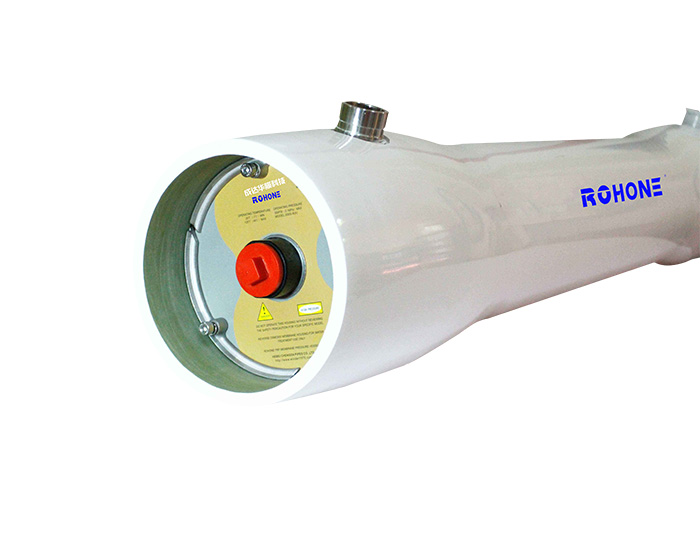The composition of reverse osmosis membrane housings is mainly two tubes with materials that allow materials to enter and leave, and the parts at the ends of the body of the tube are mainly used to flow out through the liquid.
Installation Precautions:
1. Fix the bracket completely.
2. The reverse osmosis membrane pressure vessels are horizontally supported and reliably fixed in accordance with the span (S) recommended by the manufacturer.
Note: a. Make sure that the span (S) is horizontally supported and securely fixed as recommended by the manufacturer. b. Make sure to use the saddle and strap flexible fixing pressure vessel provided by the manufacturer. c. It is forbidden to make any rigid fixation and connection to the pressure vessel.
3. Clean all components of the endplate and the inner surface of the pressure vessel (strong acid and alkaline solutions are prohibited, and water or neutral solutions are recommended).
4. Appropriate lubricant is applied to the sealing ring surface and the sealing area on the inner surface of the pressure vessel (glycerin is recommended).
5. Put the thrust ring into the pressure vessel, and then install the concentrated water endplate.
6. Push the membrane elements one by one into the pressure vessel until the adapter is connected to the water purification outlet of the membrane element.
Note: Ensure sufficient assembly space to provide sufficient space for the installation of pressure vessels and membrane elements. Generally, the membrane elements are pushed in from the raw water end and pushed out from the concentrated water end when replaced.

Reverse Osmosis Membrane Housings
7. Install the endplate of the raw water end into the pressure vessel, so that the adapter and the purified water outlet of the membrane element are connected.
Note: Use a rubber mallet to strike the support end plate evenly until the baffle plate fits into the slot on the end face of the container.
8. Install the four-flap snap ring into the card slot, then install the security ring, and assemble the hexagonal bolt to fix it.
9. Tighten the tube plug.
10. Connect the piping.
note:
a. Ensure that there is room for flexibility in the pressure vessel's fixation and piping connection to adapt to the effects of pressure and temperature changes in the radial and lateral directions of the pressure vessel.
b. Make sure that the piping and the original/concentrated water port of the side-connected pressure vessel are freely docked and kept concentric.
c. It is forbidden to bear the weight of the piping by the pressure vessel.
Instructions and maintenance requirements:
To ensure the long-term and safe operation of the membrane shell, please observe the following regulations and recommendations.
1. The cold and hot shrinkage expansion rate of the glass fiber reinforced plastic membrane shell is small. Please observe the rated design pressure index during use, and use it within the allowable value range. Prolonged overpressure operation is strictly prohibited.
2. 4 INCH glass membrane housings use temperature is generally within 7 ℃-49 ℃, it is strictly prohibited to work outside this temperature range.
3. The backpressure of the purified water outlet at the two ends must not exceed 125PSI.
4. Strictly abide by the pressure level of each medium, such as clean water, sewage, seawater, etc. If you use water with a special medium, please contact the company in advance to avoid accidents.
5. When the system is working or there is pressure in the membrane shell, it is strictly prohibited to knock, disassemble or move the membrane shell. The surrounding vibration source environment must be strictly controlled.
6. The upper part of the membrane shell cannot be used as a load-bearing body to exert pressure and gravity, nor can it exert pressure on the corresponding parts of the membrane shell.
7. Cleaning. In order to ensure that the inner surface of the reverse osmosis membrane shell is clean, please choose a neutral cleaning solution for cleaning. Do not use concentrated hydrochloric acid or concentrated sulfuric acid as a cleaning solution.